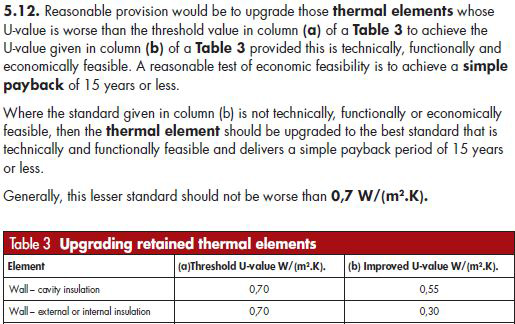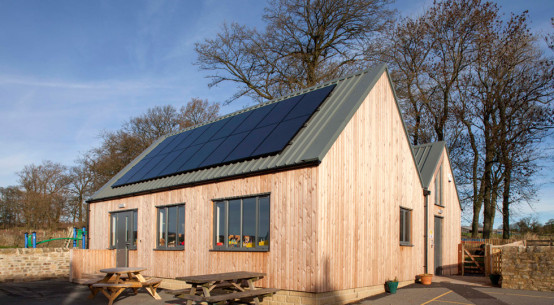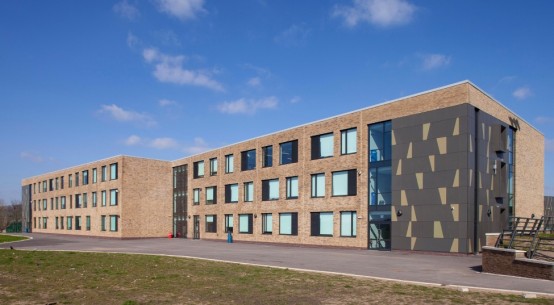
Confusion among the few architects was also with the targeted U value, with several architects advised us of 0.3 W/m2K as a target for the solid wall insulation. When we asked why the target for the more advance and modern cavity walls insulation was only 0.55 W/m2K they again were not able to explain such a discrepancy. Looking at the building regulation L1B, part 5.12 (see below) we demonstrated that the U value of about 0.7W/m2K is about three times improvement vs as-built and generally sufficient for the traditionally build stone or brick wall insulation which enables usage of permeable insulation materials.

If properly maintained a ‘breathing’ building has definite advantages over a modern impermeable building. As temperature and therefore pressure is generally higher inside of the home vs outside, water vapour is pushed outside of the home. Permeable materials such as light-weight insulation renders and plasters acts as a buffer for moisture, absorbing it from the internal air, and releasing it to the outside. Modern construction methods rely on mechanical extraction to remove water vapour formed by the activities of occupants.
It is important to understand that moisture in solid walls comes from several possible sources:
- Water from rainfall: This obviously affects solid walls but not all internal damp is a result of penetrating rain. With the exception of extremely exposed locations such as on the coast or high ground, it is unusual for driving rain to pass through most solid walls in good condition. Normally, it will only saturate the outer part of the wall, which will then dry out when the rain stops.
- Rising ground moisture: This can be present in any solid wall which does not have a physical damp proof course. In such situations the moisture level is generally controlled by the ‘breathability’ of the material, which limits total moisture by allowing the excess to evaporate harmlessly away.
- Moisture generated in the building: It is often underestimated how much moisture can be generated by people living in the building, simply through breathing but also from cooking and washing. The permeability of external solid walls also significantly helps to buffer and control excess moisture and condensation from these sources.
As traditional buildings need to ‘breathe’ the use of vapour barriers and other impermeable materials commonly found in modern buildings must be avoided, as these materials can trap and hold moisture and later create damp problems. Practical experience shows that the introduction of materials and systems that do not maintain permeability or breathability can seriously exacerbate existing moisture related problems and or create new ones in older buildings. Examples of impermeable materials and systems which could give rise to problems might include foam insulation, cement renders and cement pointing. Any of these used on an external wall can trap moisture within the wall and lead to damp and decay, as well as making the walls feel cold and ‘clammy’. Installed on the inside, they may do less damage to the building fabric itself, but will negate its ability to buffer moisture levels in the internal air. Both of these can significantly reduce comfort for people living there.
If the walls are already damp before installing impermeable insulation, these effects will be exacerbated. Under these circumstances it is particularly important to allow walls to ‘breathe’ in order to dry to the outside as effectively as possible.
Based on Historic England guidance notes.





